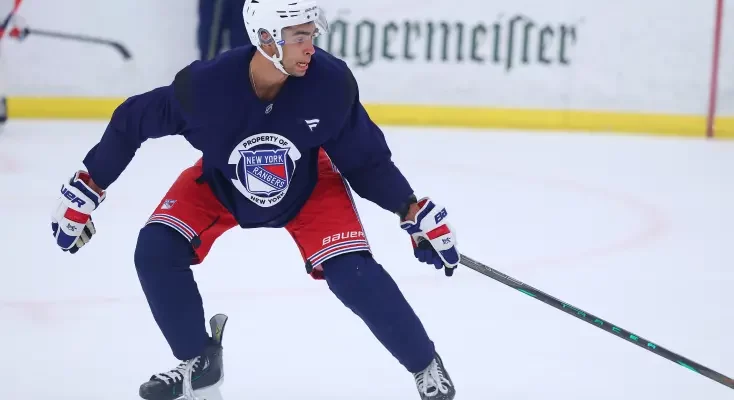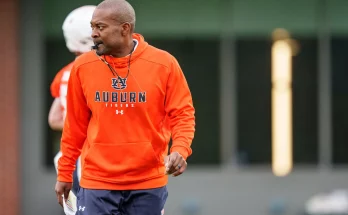After Trading K’Andre Miller, the New York Rangers Officially Enter a New Era of Defensive Restructuring
On July 1, the New York Rangers made a significant move by trading K’Andre Miller, their 22nd overall pick in the 2018 NHL Draft, to the Carolina Hurricanes. This transaction marked not only the end of an era for the promising young defenseman but also a clear signal that the Rangers organization is committed to reshaping and recalibrating its defensive core. The departure of Miller, who had been seen as a foundational piece in New York’s blue line for years, now ushers in a period of transition that could define the franchise’s defensive identity for the foreseeable future.
K’Andre Miller was drafted with high expectations, considered one of the more talented defensive prospects in the Rangers’ recent history. His combination of size, skating ability, and physicality gave fans hope that he would develop into a reliable top-four defenseman capable of anchoring the team’s defense for years. Throughout his tenure with the Rangers, Miller showcased flashes of brilliance — using his aggressive style and offensive instincts to impact games on both ends of the ice. However, despite his promise, his development was met with some inconsistency and challenges that the organization evidently believed could be better addressed through a fresh approach.
The decision to trade Miller did not come lightly. Within the Rangers’ front office and coaching staff, extensive discussions took place regarding the team’s defensive needs and long-term strategy. The choice to part ways with a former first-round pick reflects a broader philosophy of adaptation and willingness to make bold moves in pursuit of sustained success. The Rangers have expressed confidence that this transition will allow them to bring in new assets, whether in the form of younger talent, draft capital, or experienced players, to strengthen the defense and complement the offensive firepower that the team currently possesses.
Miller’s move to Carolina introduces a new chapter for both player and team. The Hurricanes, known for their strong defensive system and emphasis on fast-paced, aggressive play, could be an ideal environment for Miller to further refine his game. Carolina’s coaching staff has a reputation for developing defensemen by encouraging mobility and offensive contributions while maintaining sound defensive responsibility. For Miller, this fresh start represents an opportunity to unlock his full potential and perhaps become the impactful player many believed he could be. Meanwhile, the Rangers will be closely monitoring his progress, knowing that the NHL is often a league of second chances and evolving narratives.
The Rangers’ defensive restructuring goes beyond just this single trade. The organization is actively exploring how to build a more cohesive, adaptable, and resilient blue line capable of withstanding the physical and tactical demands of the modern NHL. With the league trending toward faster-paced offense and heightened skill levels, the ability to counteract opposing teams’ attacks with smart positioning, quick transitions, and efficient puck movement is paramount. The Rangers are seeking to integrate players who can not only defend well but also contribute offensively, helping to drive the team’s transition game and generate scoring chances from the back end.
From a roster-building perspective, the departure of K’Andre Miller frees up both cap space and a valuable roster spot that can be used strategically to bring in new talent. The Rangers’ management is known for being proactive and forward-thinking, aiming to strike the right balance between developing homegrown players and acquiring experienced veterans who can provide leadership and stability. This trade fits into a broader plan to remain competitive in the highly challenging Metropolitan Division and the NHL at large. With a core of skilled forwards and a growing group of promising defense prospects, the Rangers are poised to leverage this moment as a stepping stone toward sustained playoff contention.
Fans’ reactions to the trade were mixed, reflecting the emotional ties many had developed with Miller as a young Ranger hopeful. While some expressed disappointment at seeing a homegrown talent leave, others understood the strategic necessity behind the move. The NHL is an ever-evolving league, and teams must sometimes make difficult choices to ensure long-term competitiveness. The Rangers’ commitment to transparency and communication with their fanbase has helped ease some concerns, as the organization outlined its vision for the future and how this trade fits within that larger picture.
Looking ahead, the Rangers will face the challenge of integrating new players into their defensive group and establishing chemistry quickly. Defensive units often rely heavily on trust, communication, and an intuitive understanding between partners. Building this kind of cohesion takes time, but the Rangers are hopeful that the infusion of new talent and the leadership of their coaching staff will accelerate this process. Additionally, the organization is focusing on player development programs to maximize the potential of their young prospects, ensuring that the defensive corps evolves in a way that aligns with the team’s overall strategy.
The trade also underscores a broader theme in the NHL: the importance of adaptability and strategic asset management. In a league where salary cap constraints and competitive balance are constant factors, teams must be agile in their roster decisions. Moving a player like K’Andre Miller — who still has considerable upside — demonstrates the Rangers’ willingness to make tough decisions to improve their overall roster flexibility. This mindset could prove essential as the team navigates the coming seasons, balancing immediate performance with long-term sustainability.
Ultimately, the New York Rangers’ decision to trade K’Andre Miller signals a decisive step toward reshaping their defensive foundation. While the departure of a promising young defenseman is always significant, the move aligns with the franchise’s ambition to remain competitive and evolve with the changing dynamics of the NHL. The coming months and years will reveal how this trade impacts both Miller’s career and the Rangers’ defensive identity, but for now, the organization has made it clear that they are committed to charting a new course and building a defense capable of supporting championship aspirations.



